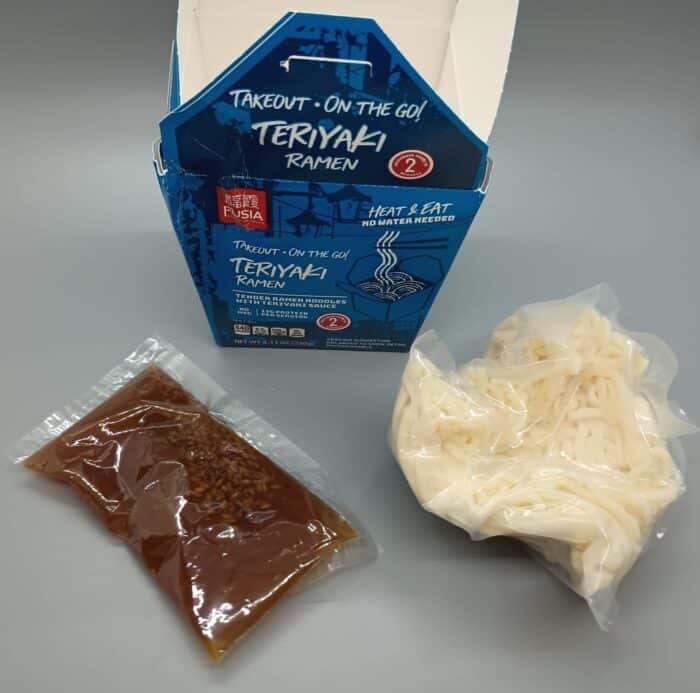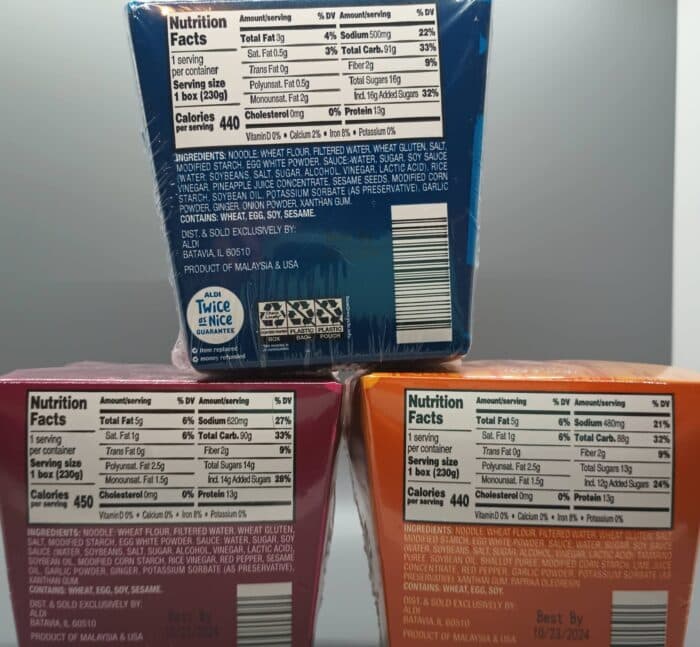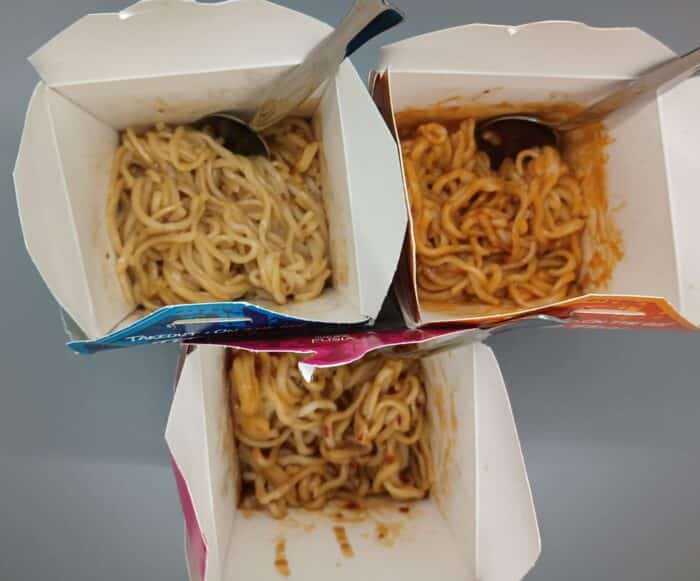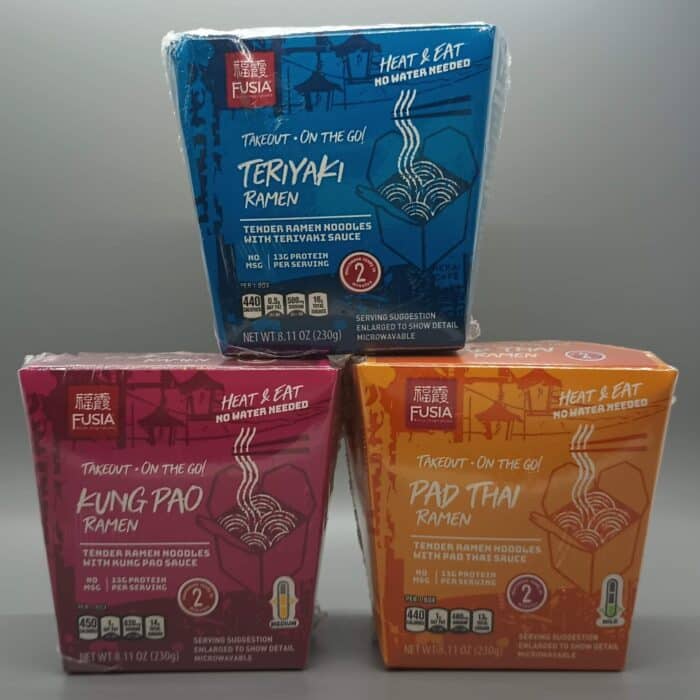Fusia Asian Inspirations Ramen
Ramen is a noodle dish most people are familiar with. It’s a great comfort food, with a savory, salty broth and soft noodles.
The word ramen is Japanese but comes from the Mandarin Chinese word for “pulled noodles.” Ramen’s first recorded appearance was among Chinese immigrants living in Yokohama Chinatown in Japan in the early 20th century, and it was developed from southern Chinese noodle dishes. Ramen became popular during food shortages driven by a poor rice harvest in Japan after World War II. To help feed people, cheap wheat flour from the U.S. was used in everything from bread to wheat noodles for ramen. Instant noodles were invented in 1958, so that all you needed to make ramen was boiling water.
I grew up on those inexpensive instant ramen packets from the grocery store. I remember packing ramen in a thermos for school lunches or enjoying it for lunch on days when I didn’t have school. After my mom realized how much sodium and fat most ramen contains, she stopped buying it so often. Yet it still remained a nice treat we indulged in sometimes. I especially enjoyed ramen when I was sick because the soft noodles and broth were soothing to a sore throat, and the steamy broth helped relieve congestion.
Aldi has stocked name brand Maruchan ramen for as long as I can remember. The grocer usually sells it in multi-packs.
Recently, I discovered Aldi has ventured into offering ramen under its Fusia Asian Inspirations house brand. This ramen is not sold in the traditional plastic pouches with blocks of hard noodles. Instead, this ramen is packaged in stylish cardboard takeout-style containers, with plastic pouches of sauce and soft noodles inside. It comes in three different flavors: teriyaki, kung pao, and pad Thai. I bought one of each to try at home.
Fusia Asian Inspirations Ramen cost $2.49 for an 8.11-ounce package at the time of publication. These are a product of Malaysia and the U.S.
These are Regular Buys, so you should be able to find them at Aldi any time of year.

Each container serves one person. These couldn’t be easier to heat and serve. The only preparation instructions on the boxes are for heating these in a microwave. To cook these, open the packaging and empty the noodles into the box and separate the noodles. Pour the included sauce over the noodles. Close the lid and microwave on high for 2 minutes. There is no need to add water; the box states you simply “heat and eat.” Be careful when removing the noodles from the microwave, as they will be very hot.
I used kitchen scissors to cut open the noodle and sauce pouches. They do have places where you can tear them open, though, if you’re making these at work or school and don’t have access to scissors.
Also, in case you’re worried about sauce leakage when you heat these, the takeout-style boxes are thick and well-reinforced, and I didn’t have any problems.

The noodles are primarily made with wheat flour. The packaging states these contain no MSG. If you’re looking out for allergens, all of the flavors contain wheat, egg, and soy. The teriyaki and kung pao flavors also contain sesame.
Ramen is not all that healthy for you. This ramen in particular is high in calories, sodium, and carbs, and it contains added sugars. One serving will net you 440-450 calories, 3-5 grams of total fat (4-6% DV), 0.5-1 gram of saturated fat (3-6% DV), 480-620 mg of sodium (21-27% DV), 88-91 grams of total carbohydrates (32-33% DV), and 12-16 grams of added sugars (24-32% DV).
The kung pao flavor is advertised as medium spicy, and the pad Thai is advertised as mildly spicy.

Once you heat these and the sauce is stirred in, it’s not a lot of noodles considering how many calories are in these. These barely fill the takeout containers halfway.
So how do these taste?
The noodles have a softer texture than the blocks of hard ramen I’m accustomed to cooking. That’s not surprising because these noodles are packaged already cooked and you’re just heating them in the microwave.
My family found the teriyaki noodles to be okay but not all that special or flavorful, and they don’t exactly scream teriyaki flavor. The pad Thai noodles are fine, with just a hint of spice and some good flavor. The kung pao noodles are as advertised: very spicy, with visible specks of red pepper. The box claims the kung pao ramen is medium spicy, but these seem to be on the upper end of medium. One of our family members who likes spicy foods such as Takis took a bite, made a surprised face, and said, “Why didn’t you guys warn me?” They liked the spicy ramen and happily ate it, though.
Overall, these noodles are okay but sort of forgettable, and they’re kind of what you might expect for boxed, shelf-stable food.
The Verdict:
Fusia Asian Inspirations Ramen is sold in shelf-stable cute little takeout-style containers. Inside each box is a pouch of sauce and a pouch of cooked noodles, and to prepare these you simply dump all the components into the box and microwave it. This ramen comes in three flavors: teriyaki, pad Thai, and kung pao. We like the pad Thai the best, and the kung pao is good but very spicy. The teriyaki is our least favorite because it lacks as much flavor as the other options. Just keep in mind that none of these is healthy, so this is definitely a food to indulge in only sometimes.








is there any way to cook these without a microwave because I’ve been wanting to make them but I don’t have a microwave.
You could probably heat them in a small pan on the stove, but I think you’d want to stir frequently and keep a close eye on them.
I tried these for the first time. It was the pad Thai flavored one. The cardboard (or whatever is used) is now so thin that when I poured the sauce over the noodles, it leaked out in several places. So, when I cooked it, I put it on top of a paper towel in the microwave and, sure enough, the paper towel had sauce all over it when the 2 min. were over. For that reason alone, I would never by it again.